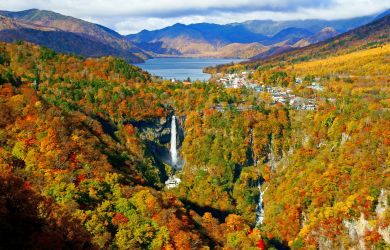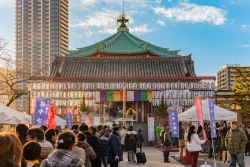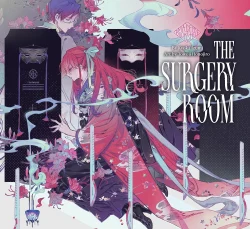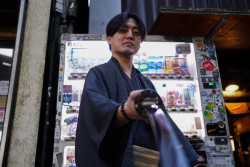
December 22, 2009
The Year in Food
Metropolis rounds up the tastiest dining trends of 2009
By Metropolis
Originally published on metropolis.co.jp on December 2009
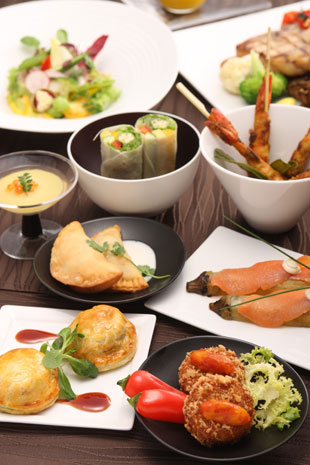
Tokyo’s pricy hotel restaurants have always managed to get by thanks to two types of customers: local foodies with deep pockets and foreigners on expense accounts. No longer. Forced to compete against low-cost rivals in a slumping market, luxury hotels have started to realize that they, too, must appeal to the masses. The Peninsula Tokyo led the charge with a calendar-ific ¥2,009 lunch deal at its already-popular Lobby restaurant. Not to be outdone, the Mandarin Oriental Hotel Tokyo unveiled a jaw-dropping, seven-dish, ¥3,900 dinnertime tasting menu at its snazzy 38th-floor eatery, K’shiki (left). Over in Roppongi, The Ritz-Carlton, Tokyo set up a “Chef’s Table Lunch Buffet” at restaurant Forty-Five; the meal includes a main dish bookended by tabehodai appetizers and desserts. The Grand Hyatt, meanwhile, organized several nifty (and thrifty) promotions. A summertime “Beer Terrace” campaign at the flagship Oak Door eatery featured a ¥5,000 all-you-can-eat and -drink deal with chicken wings, quesadillas, Caesar salad, chorizo and lots more. In October, famed Swiss chef Reto Mathis stopped by for a weekend stint at the Grand Hyatt’s resplendent French Kitchen. His three-course lunch—Ticino-style minestrone soup, sliced veal in cream with Rösti potatoes, and apple fritters with vanilla sauce—was the best meal we had all year. And, at ¥4,000, a lot cheaper than the airfare to St. Moritz.

Courtesy of T.Y. Harbor Brewing Company
Lovers of stick-to-your-ribs cooking got all they could handle in 2009—and more. The first overseas branch of Bubby’s (www.bubbys.jp), a down-home, comfort-food hotspot from New York, opened its doors on the Yokohama waterfront. Diners in Japan’s second city got a taste of homemade pies, both savory and sweet, plus hearty dishes like burgers, mac & cheese, meatloaf and steak. Though just a few months old, Bubby’s has already become a go-to spot for avid local brunchers. In central Tokyo, renowned chef David Chiddo of TY Harbor fame unveiled Southern-style US barbecue at his Beacon chophouse (above, www.tyharborbrewing.co.jp).
Kansas City ribs, North Carolina pulled pork and Texas beef brisket, plus traditional side dishes like corn muffins, coleslaw and macaroni salad, are on offer every Sunday and Monday night. Roppongi Hills’ newest eatery, Lauderdale (www.lauderdale.co.jp), opens for business at 7am with a breakfast menu of omelets, pancakes and, oddly enough, soufflés—banana-pepper, salmon-spinach, cheese and apple-cinnamon, among others. Out on the Toyoko line, owner-chef Tilksew Seife’s springtime debut, Addis (http://addiscafetokyo.com), serves up big salads, mezze plates, grilled fish and meats, and a seriously kick-ass chicken quesadilla.

When Tokyo’s first raw food restaurant, Veggie Paradise, closed its doors after a brief run in 2008, we figured that locals weren’t ready for such extreme dining. Boy, were we wrong. During the past 14 months, two new raw eateries have sprouted up, as well as a new dessert brand focusing on organic, uncooked, dairy-less sweets. Café Alive in Yoyogi-Uehara (www.cafe-alive.com) offers an all-vegetarian menu divided into “neo-macrobiotic” and “living food” sections; dishes from the latter are prepared at low temperatures. (The owners also run a “cooking” school upstairs.) In July, Manna (pictured) opened in nearby Tomigaya, but soon outgrew that location and moved to more spacious digs in Daikanyama (www.mannafest.jp). Dishes like raw “pizza” are infused with herbs and inventive toppings like walnut-basil pâté. As our reviewer put it, “The scene is hot but the food is not.” Meanwhile, two Manna co-founders, Angi and Andi Wolfgang, branched out to create a line of vegan desserts called Nama Kiss. The walnut raisin torte with white chocolate is, the sisters say, “guaranteed to curl the strictest toes in utter ecstasy.” Their company, Lucina (www.lucina-livefruitfully.blogspot.com), also offers natural health consulting and raw cooking classes.

If the one thing you’ve been missing in Tokyo is seafood from Nemuro Peninsula—a finger of land jutting out into the Pacific at the extreme northeast of Hokkaido—then 2009 was the year for you. Nemuro Shokudo (2-18-4 Shimbashi, Minato-ku) led a procession of restaurants that brought obscure regional cuisine to the city. When the standing-only izakaya opened in June, Tokyoites could finally enjoy local specialties like Tokoshirazu salmon and prized Hanasaki crab. Another region that hit the big time was Kochi Prefecture, whose grilled katsuo and juicy Taso jidori chicken are served up at Ryoma Gaiden in Yokohama (http://r.gnavi.co.jp/g600172). The southern island of Kyushu, meanwhile, got divvied up into sub-niches: Nechuya in Shinagawa (http://r.gnavi.co.jp/e620701) offers Hakata-inspired fare like char-grilled horsemeat and seafood culled from its in-store fish tank (pictured); teppanyaki restaurant Hagakure in Roppongi cooks up A5-quality Saga beef (http://r.gnavi.co.jp/g078516). To help J-food newbies keep up, the Ministry of Agriculture, Forestry and Fisheries released a free English guide to regional cuisine in June; it’s available for download at http://tinyurl.com/tasty-japan. Europeans, too, took advantage of the niche market: Txoko in Nishi-Azabu became Tokyo’s first restaurant specializing in Basque food (http://tinyurl.com/azabu-basque), while KaMu in Aoyama (http://kamu-tokyo.com) features the French-North African hybrid of “Pied-Noir” cooking.

The opening of Addis highlighted another welcome trend: veteran chefs cropping up at new restaurants. The Ethiopia-born Tilksew Seife recreated the spirit—and many of the dishes—of his former home, Good Honest Grub in Shibuya. Up the road in Aoyama, Kevin Connell, previously the executive chef at the Tokyo American Club, helped launch “Pied Noir” eatery KaMu in June. Tokyo’s hottest new nightlife venue, Two Rooms (www.tworooms.jp), opened nearby in the scintillating AO Building. The lounge area is run by former Oak Door bar manager Edward Baffoe, while the adjacent restaurant is the domain of New York Grill veteran Matthew Crabbe. Big-name Japanese restaurateurs making a splash in 2009 included Tsutomu Ochiai (pictured), a celebrity chef specializing in Italian cuisine. Ochiai augmented his trio of Ginza eateries in July with the more casual La Storia da Ochiai in Odaiba (5F Mediage, 1-7-1 Daiba, Minato-ku). After a stint in Nagano, Masahito Ueki (formerly of illustrious dining spots Stellato and Tableaux) reopened his iconic French restaurant J in Hiroo (http://msinter.co.jp/j). Although Toshihiko Yoroizuka unveiled his third pastry shop in Suginami-ku in September (http://tinyurl.com/yoroizuka), the internationally celebrated pâtissière will most likely remember 2009 for a different reason: in June, he got hitched to well-known actress-cum-wine buff Naomi Kawashima.

Two years ago, the inaugural edition of the Michelin Guide Tokyo anointed our city as the dining capital of the world. The venerable French guidebook doled out a total of 227 stars to local restaurants—more than London and Paris combined. This year, the accolades kept coming. In February, leading international chefs arrived en masse for Tokyo Taste (pictured, www.tokyotaste.net), a three-day “world gastronomy summit” celebrating Japanese food culture. A packed schedule of talks, demonstrations and workshops drew luminaries such as Joël Robuchon, Ferran Adrià, Pierre Gagnaire, Heston Blumenthal and Nobuyuki Matsuhisa. In April, the glossy US magazine Food and Wine named Tokyo the world’s “Best City for Food Lovers.” “[This is] where chefs are going for innovations,” wrote the editors. In October, the 2009/2010 Miele Guide, which showcases premier restaurants in Asia, declared Japan to be the continent’s “top dining destination.” A whopping 90 local eateries were included in the guide—the most of any country—while L’Atelier de Joël Robuchon Tokyo cracked the top 25. November saw the release of the Michelin Guide Tokyo 2010, and the city’s restaurants once again garnered a world-best 261 stars. Joining the ranks of three-star eateries were Esaki in Aoyama (www.aoyamaesaki.net), Sushi Saito in Akasaka (03-3589-4412) and Yukimura in Azabu-Juban (03-5772-1610).
Alas, 2009 gave us a fair amount of indigestion as well. The year dawned with the sad news that Porterhouse Steaks—one of Tokyo’s best Western-style steakhouses and a leading purveyor of dry-aged beef—had shut down on New Year’s Eve… Musty-cool Shimokitazawa jazz kissaten Masako also closed its doors after 56 years…. Great coffee, veggie grub and all the praise Metropolis could muster weren’t enough to save Daikanyama’s Asuka… The biggest blow, however, was the closing of Fujimamas, the Harajuku fusion restaurant that had attracted a rabid following of foreigners and internationally minded Japanese.
